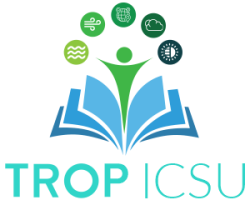Climate Solutions for Coastal and Ocean sinks sector

Climate Solutions for Coastal and Ocean sinks sector Reading A website resource designed and developed by ‘Project Drawdown’ that offers a sector-wise list of solutions to the climate crisis. It includes readings on specific solutions for various sectors and sub-sectors such as: Protect and Restore Ecosystems like mangroves, salt marshes, microalgae and seagrass meadows to […]
Climate Solutions for Industry Sector

Climate Solutions for Industry Sector Reading A short reading from ‘Project Drawdown’ that discusses climate solutions for the Industry Sector. It lists different solutions by the industry sector towards addressing the climate crisis such as: – Reduce the use of plastics, metals and cement and employ alternative materials in industrial processes – Move towards a […]
Climate Solutions for Electricity Sector

Climate Solutions for Electricity Sector Reading A short reading from ‘Project Drawdown’ that discusses climate solutions for the Electricity Sector. It lists different solutions by the electricity sector towards addressing the climate crisis such as: -Enhance efficiency by introducing new technologies and practices that reduce electricity demand – Shift production towards renewables and reduce dependency […]
Climate Solutions for the future

Climate Solutions for the Future Video A video playlist titled ‘CS – Drawdown – 9 – Coming Attractions’ from the ‘Murtugudde Climate Academy’ by Dr. Raghu Murtugudde. It consists of 29 short video lectures that summarise upcoming innovations in climate solutions. The solutions are based on the book titled ‘Drawdown’ edited by Paul Hawken. The […]
Climate Change and Bird Migration

Climate Change and Bird Migration Audio This short audio podcast discusses shifts in bird migration patterns due to climate change. It discusses bird species native to Wisconsin and changes in their migratory patterns. About Tool Tool Name Bird populations shift north as climate changes Discipline Biological Sciences, Environmental Sciences Topic(s) in Discipline Bird Migration Climate […]
Climate Change and Human Health in the United States

Climate Change and Human Health in the United States Reading This reading resource contains several modules and case studies on climate change and its impact on human health. Chapters (available for download or to read online ) include Temperature-related Death and Illness; Air Quality Impacts; Vector-Borne Diseases; Water-Related Illness; Food Safety; Mental Health and Well-Being […]
Risk of Bird Extinction

Risk of Bird Extinction Reading An article from National Geographic about how climate change may pose a risk of extinction to more than half of North American birds (also includes visuals of the data from National Audubon Society for some bird species). About Tool Tool Name Climate Change May Put Half of North American Birds […]
Daisyworld – A Model to Explore the Gaia Hypothesis

Daisyworld – A Model to Explore the Gaia Hypothesis Model/Simulation A Model/Simulation to explore the Gaia hypothesis and the concepts of albedo and hysteresis through the example of daisies (living organisms) and their interaction with temperature (climatic factor). Students will configure the distribution of black daisies and white daisies, the albedo for each of these […]
Human Health, Vector-Borne Diseases, and Climate Change

Human Health, Vector-Borne Diseases, and Climate Change Video This video gives an overview of Climate and Health, and especially about the vector-borne diseases. /p> /p> About Tool Tool Name Human Health, Vector-Borne Diseases, and Climate Change Discipline Biology Topic(s) in Discipline Human Health, Vector-Borne Diseases Climate Topic Climate and Health Type of tool Video Grade […]
Climate Change and the American Pika

Climate Change and the American Pika Video A video that explains the impact of climate change on the habitat and population of a species (specifically, the American Pika) and explores whether this species could be used as an indicator of climate change. Students will learn about climate-related factors that are important for the survival of […]


